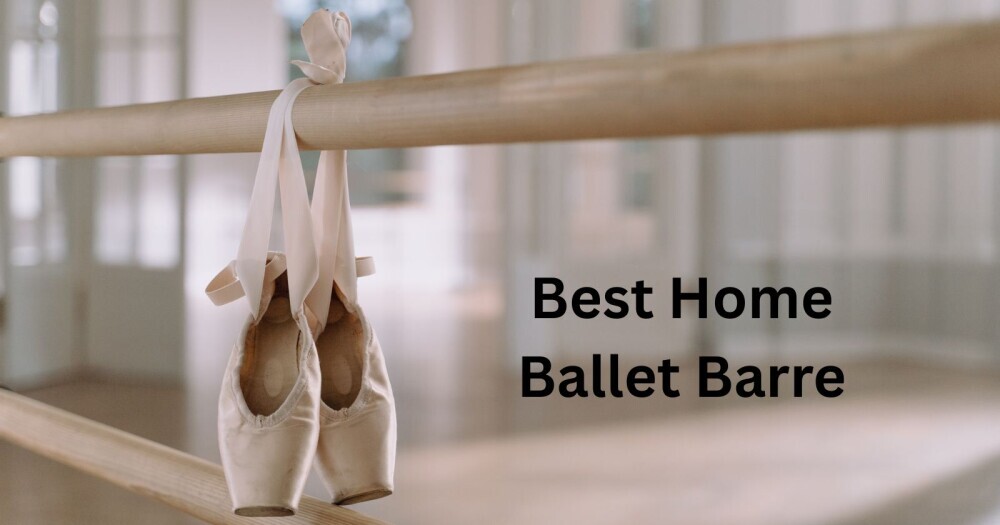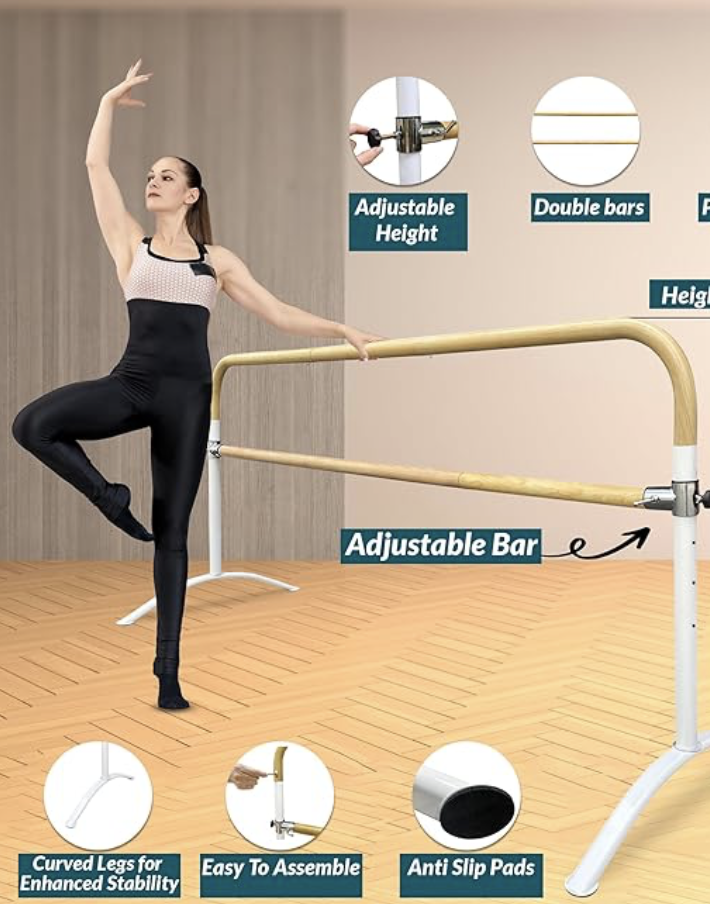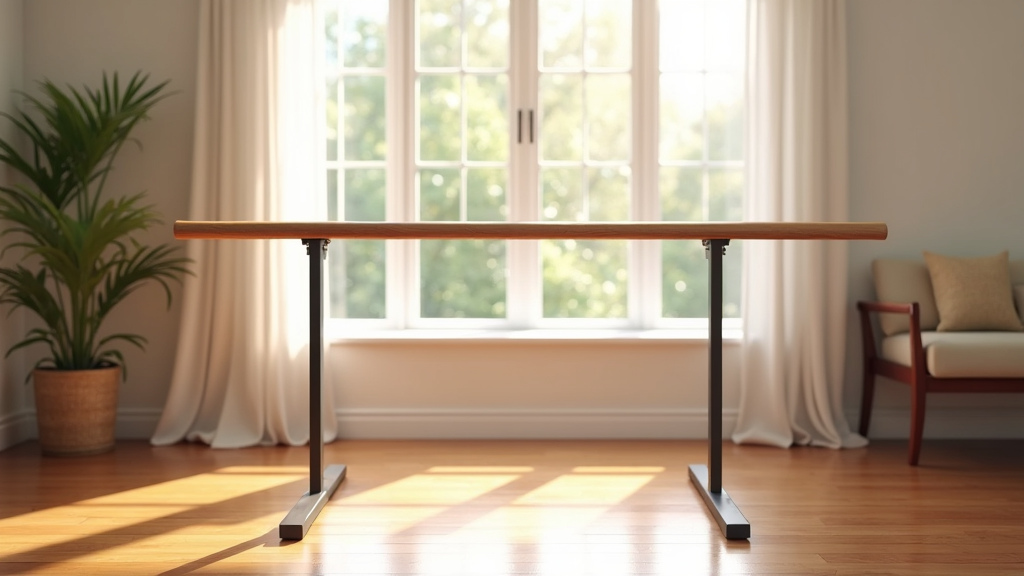If you’re hoping to step up your ballet practice from home, finding the best home ballet barre is really important. When I first started doing barre workouts at home, I had no clue what to look for or which features mattered most. After trying several different models and making plenty of rookie mistakes, I realized just how much a quality home ballet barre can impact training and even everyday stretching.
A good home ballet barre makes it simple to enjoy ballet, dance, Pilates, or even just a morning stretch session in your living room. Picking the right one makes routines feel safer, smoother, and honestly, much more motivating. Here’s what I’ve learned about hunting down the best ballet barres for home to help you skip all the guesswork.
This article may contain affiliate links, which means that the owner of this website may get commissions on qualifying purchases.

Best Home Ballet Barre
Common Problems with Cheap Ballet Barres (And How to Avoid Them)
Sometimes, it’s tempting to grab the cheapest barre you can find online, especially if you’re just getting started. But I’ve run into a few issues with bargain barres that made me wish I’d spent a bit more time researching:
- Wobbly or unstable construction can make workouts feel unsafe.
- Poor grip means your hands or feet slip easily during stretches.
- Barres that aren’t height adjustable are tough for households with different users.
- Bases that scratch or damage your floors can become an annoying problem fast.
A good ballet barre should feel sturdy, have nonslip features, and adjust easily to a comfortable height. Keeping these basics in mind helps a lot when picking the right one for your space.
What Makes a Great Home Ballet Barre?
When I’m comparing home ballet barres, there are a few things I always pay attention to. These details usually make the biggest difference in daily use:
- Portability: Portable barres are pretty handy if your living room doubles as your workout space. Look for ones that fold or come apart easily for storage.
- Height Adjustability: Super useful if you’ll have multiple people using the barre or if you like to experiment with different exercises and stretches.
- Material: Metal barres are usually sturdier, but wooden barres give a classic studio feel and are nice to hold during longer sessions.
- Length and Base Width: If you need a bit more space for big movements, look for longer barres and stable, wide bases that won’t tip. Sometimes a wider base gives you more confidence, too, especially if you practice on slick floors.
- Weight Capacity: Check the max weight to make sure it’ll work for you and anyone else who might use it, including kids.
- Floor-Friendly Feet: Rubber or foam padding on the base prevents scratches and keeps the barre from sliding, protecting your floors in the process.
Choosing a model with these features will make practice smoother, safer, and a lot more enjoyable.
How My Home Ballet Barre Improved My Routine
I started out using a broomstick across two chairs. That setup was fine for a quick warmup, but it just wasn’t stable enough once I began more serious routines. As soon as I upgraded to a proper portable barre, I felt a huge difference in my posture, balance, and even motivation. With a stable barre, I could focus on technique instead of worrying about falling over.
Click Here for some ballet barre exercises.
- Having my own barre made following online ballet or Pilates classes much easier and kept me more consistent.
- I noticed I started using the barre for quick stretches throughout the day, not just workouts. It was even handy for calming down after a long work session.
- My balance improved, and so did my form, especially during demi-pliés and arabesques.
- Family and friends joined in for workouts since the barre adjusted easily for younger kids. This brought unexpected group fun and variety to fitness time.
Personally, I found it worth investing a little extra in a barre that could grow with my skills and fit the whole household. No more dragging furniture around every time I wanted to move.
Key Features Worth Checking Out
Single vs. Double Bar
Single barres are lighter, easier to move, and take up less space, but double barres add extra exercise options—for stretches or beginner pull-ups. I’ve used both, but if you share the barre or want more range, a doublebar setup is pretty cool.
Adjustability
Look for models with quick-adjust knobs, since you’ll probably want to tweak the height regularly, especially for stretches, dance, or if you share with kids or friends.
Stability
A heavy base or nonslip foot pads are super important for safety, particularly on hardwood or tile floors. I always avoid barres that rock or slide around easily. Pay close attention to reviews that mention stability before you buy.
Easy Setup and Storage
If you’ve got a smaller space, it makes a difference to grab a barre that’s easy to fold, disassemble, or tuck behind the sofa when you’re done. I’d say this is one feature that sounds minor but ends up being pretty valuable in everyday use. Many models snap together or pull apart for storage, and it’s a lifesaver if your space doubles as a living room or bedroom.
Popular Home Ballet Barre Picks

- Vita Vibe Portable Ballet Barre: Known for its quality aluminum build and sleek design, this one’s easy to move and store. Worth a look if you’re after something modern and durable.
- Dolibest Space Saver This one’s budget friendly and attaches to the wall.
- Ballet Barre Portable for Home or Studio – This one is a best seller. Fully adjustable and built to last.
All these brands have solid reviews, and I’ve either tried them myself or chatted with others who have. Checking real-life reviews and measuring your space before ordering is super helpful here.
Try a Home Ballet Barre—No Fancy Studio Required
Home ballet barres aren’t just for serious dancers; they’re for anyone who likes stretching, balance work, or creative exercise routines. Even if you’ve never taken a ballet class, you’ll probably find a barre useful for everything from posture practice to gentle movement breaks while working from home. It’s a super simple way to add a little movement to your day without a lot of fancy gear or setup.
- Most home barres are easy to assemble (no tools needed for many models).
- You can use them for everything from full dance routines to a quick morning stretch.
- Look for height adjustable and portable options if you want flexibility in your workout space.
If you’ve been thinking about adding more movement or creativity to your home routine, a home ballet barre is genuinely worth checking out. Finding the right fit takes a little research, but it’ll pay off every time you feel steady, safe, and ready to move. Grab one that matches your needs and see how much easier (and more fun) at-home barre practice can be. Fitness doesn’t mean perfection; it’s about movement, consistency, and enjoyment—qualities that a great home ballet barre can truly bring to life.
Take your dance space up a notch and let barre workouts bring some energy and stretch into your daily routine!


Loved the part where you talked about upgrading from a broomstick and chairs to a real barre such a relatable and motivating story! It really shows how the right equipment makes a huge difference not just in performance, but in consistency and overall enjoyment. The tips on height adjustability and floor-friendly feet are gold especially for those of us in shared spaces with hardwood floors. Also, I didn’t realize how helpful a double barre could be for added versatility.
Quick question: Between wood and metal barres, which one holds up better long-term for regular use? And are wall-mounted barres better for stability, or is portability usually the smarter choice for most home users?
My favorites are wood to hold onto and metal supports. These last forever if you look after them properly.
I really enjoyed your roundup of what makes a great home ballet barre! The way you point out that height adjustability and floor‑friendly feet help avoid scratches and make sharing the barre easier felt super clear and practical. I also loved the relatable anecdote about upgrading from a broomstick setup—totally had me nodding! Quick question: do you lean toward wooden or metal barres for long‑term durability, especially if someone plans to use it daily? And I’m wondering—have you found wall-mounted versions offer better stability than portable ones, or is portability still worth it for most home dancers?
I personally prefer the feel of the wooden barres, but the metal is certainly more durable over time. Also it depends on studio space on whether you prefer wall mounted or portable barres. I have both in my studio, as when the classes are big we can use both sides of the portable ones.